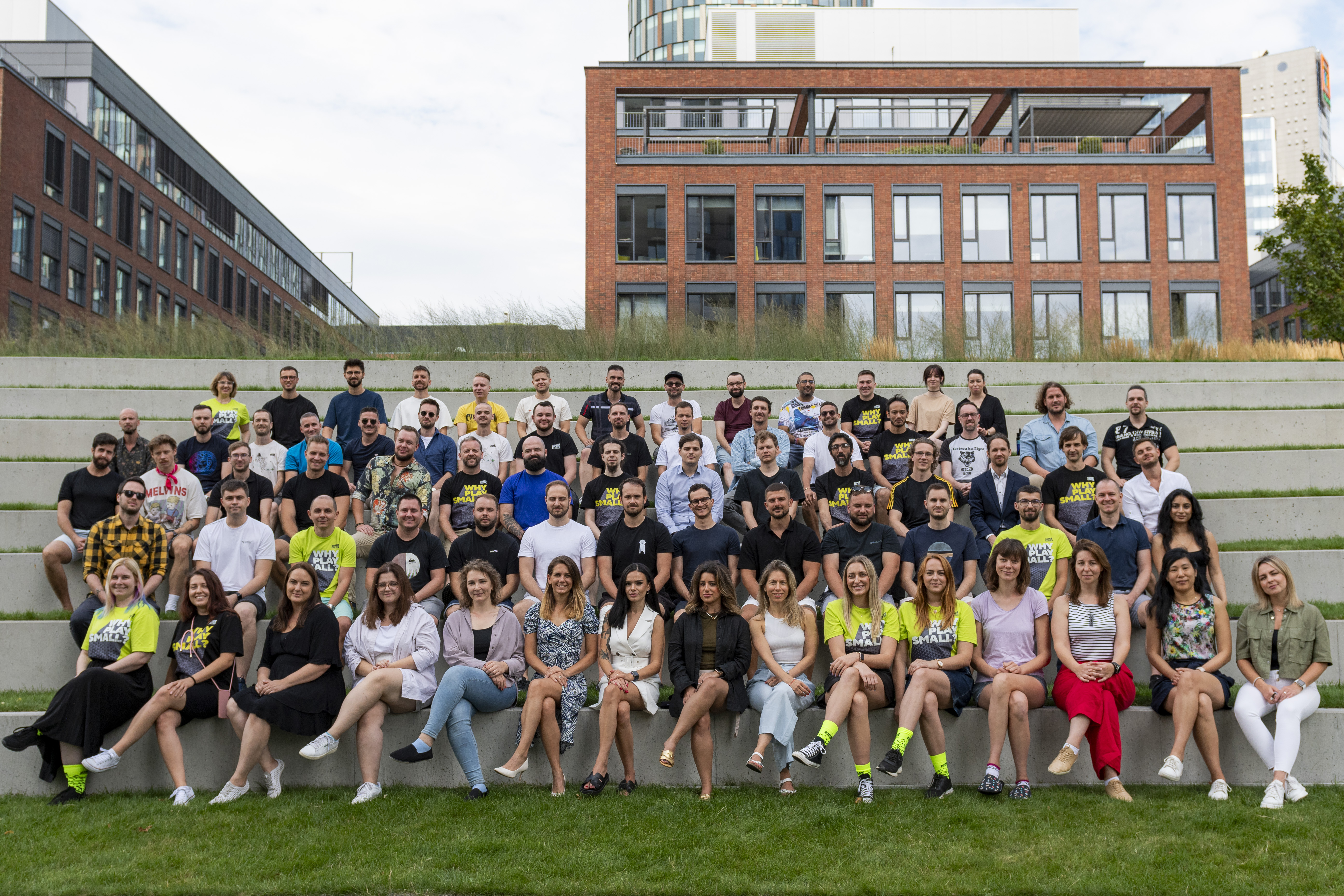What is going on in game marketing and what are some trends publishers should pay attention to? Milan Štrba, director of professional services at mobile growth company SuperScale, has discussed the current state of mobile UA, hybridization, and Western devs trying to copy Asian hits like Genshin Impact.

Milan Štrba
Alexander Semenov, Game World Observer: Hey there, Milan! So glad you could join us today. For starters, tell us a bit about yourself. How long have you been in marketing? And how did you get into the games industry?
Milan Štrba, director of professional services at SuperScale: After getting my master’s at Aalborg University in 2017, I went to work in the marketing department for the governmental office. A year later, through networking, I landed a job as UA manager for a mobile gaming startup called Cellense, which later became SuperScale.
Do you feel like the entire User Acquisition (UA) sector has been in limbo for the past couple of years? I mean, it’s not entirely clear how it will evolve and be regulated.
Milan: I wouldn’t call it limbo, but it’s definitely in a different state. Every person involved in mobile gaming marketing has been in constant uncertainty. It’s made us explore new ways to analyze and interpret the data and make the best decisions from there.
Would you say the golden age of UA is over? I’m talking about the period when the market was like the Wild West, while at the same time marketing companies could grow and scale rapidly.
Milan: The old way of doing UA is definitely over. I’d be cautious about calling it the golden era as we might look back at the present era as the golden one in a few years. Our approaches have changed, there’s more emphasis on reliable data (i.e. “sources of truth”) while also pushing more into Marketing mix modeling (MMM) and using different marketing channels.
Speaking of UA in gaming, what’s happening there now? What major trends would you highlight?
Milan: For one, systemic creative production and testing. I’d also say a more holistic analysis of marketing effectiveness, with more emphasis on brand and influencer marketing and community management.

As someone who understands the scope of UA campaigns, would you say the mobile games market has closed its doors to small and medium-sized game companies? Is success now only possible for large companies with million-dollar monthly budgets?
Milan: Doors aren’t closed completely, but the minimum spend you need to see reliable data has significantly increased. This has made things harder, especially for small studios with limited spending power.
A couple of years ago, when the post-IDFA era was just beginning, everyone noted a shift in advertising funds towards Android. Is this still the case?
Milan: This trend has finally ended. Most games that I work with actually have significantly higher profitable spend on iOS.
Looking back and analyzing all the post-IDFA changes, can we summarize and quantify how much the mobile gaming advertising market on the Apple platform has shrunk, if at all?
Milan: Shrink happened primarily in the first year of the IDFA changes. From my personal experience, we cut the iOS budget by nearly 60% during the first year of uncertainty and chaos.
Is it fair to say that due to the discontinuation of IDFA, mobile advertisers are essentially forced to focus solely on reach? Doesn’t this resemble how products were promoted on TV in the past?
Milan: “Reach” is not the metric I’d focus on. If you’re honing a strategy, it’s better to look at eCPI or other ways you can calculate the actual impact, like measuring the K-factor. The TV comparison is very simplified and a bit scary. We’re not there yet, but I believe this is the trend we are heading towards.
I’ve come across the opinion that the new rise of misleads is precisely connected to data aggregation issues. The argument is that since there’s no precise way to segment acquisition channels, the focus shifts to creatives that aim to minimize CPI. What do you think about this perspective?
Milan: Creatives are one aspect that marketing departments still have full control over, so they can directly measure each creative’s performance and see its impact. Platforms should be the first to react to misleads and take care of them, but I doubt they will. From past experience I have a feeling the EU will be the first to step in.
Hardcore and midcore games have always had high CPIs. Now it’s even more challenging to offset that. Do you feel like there are fewer advertising campaigns promoting these types of games?
Milan: I haven’t noticed any drop in hardcore or midcore game marketing.
There’s a lot of talk about hybrid-casual games these days. Some believe that they represent the future of hyper-casual projects. What are your thoughts on this?
Milan: Definitely. I believe hybridization in general is a trend we’re going to see succeed in the next couple of years. People get bored of the same mechanics and naturally get excited when they get some new mechanics enhancing the experience of their favorite genre.
I’m sure you’re keeping an eye on the download rates and engagement metrics that hyper-casual games continue to maintain. Do you see any significant declines in any of these metrics in the niche?
Milan: Definitely a significant decline.
In 2020-2021, the top 10 most downloaded mobile games changed significantly from month to month. Each month, 4-6 newcomers would reach the top of the charts. This is much less frequent now. What are the reasons, in your opinion?
Milan: LiveOps. The biggest players in the market are putting immense effort to maintain their dominance by investing heavily into LiveOps.

SuperScale team
I know that following the success of multi-platform games like Genshin Impact and Honkai: Star Rail, many game companies have started developing their own similar titles. What challenges do they face in terms of promotion and acquiring traffic for mobile games?
Milan: The biggest challenge I believe is balance and innovation while copying these very specific titles. I’ve yet to see Western publishers succeed in this genre on mobile. Personally, I don’t believe we’ll see any success from Western companies here anytime soon.
I’d also like to discuss the promotion channels that are getting more relevant. If in-game ads used to account for up to 90% of traffic, then what’s happening now? Can we say that focusing on platforms like TikTok, YouTube Shorts, etc. can provide good and stable traffic? What share of installs could they account for?
Milan: TikTok definitely became a reliable source of stable traffic. Social UA channels usually account for 50% of installs — depending on the genre and marketing budget. Small studios with limited budgets should invest primarily (around 80% of their marketing budget) into these channels due to the budget control.
While our conversation is focused primarily on mobile games, I’m curious about the situation with promoting PC and console titles. What are the prices and conversion rates in these markets? I’m seeing more and more of their ads on mobile and I’m wondering if there is a trend.
Milan: Based on my limited experience promoting PC titles, I can say that the conversions are around 2x higher and this trend of promoting PC and console on mobile will continue but more as a cross-platform promo. PC and console marketing is still tough because of closed ecosystems like Steam, PS Store, and so on.
With the release of multi-platform blockbusters, the entry of console and PC publishers into social media advertising, and the expansion of mobile hits to PC, do you think there are corresponding changes happening in marketing? Are leading marketing platforms starting to consider desktop and consoles as new key platforms?
Milan: There are some companies which already have multi-platform solutions, such as AppsFlyer and Xsolla. I believe multi-platform is the future. I personally would love to play and progress in my favorite games across different platforms.
It’s still early to summarize the year, but perhaps you have some forecasts for the end of 2023. What can we expect in the mobile game marketing and UA market? What should we prepare for and keep an eye on?
Milan: Four big trends spring to mind, some of which we’ve already mentioned. First, increased focus on creative production and improved creative insights and analytics. We’ll also see AAAs releasing cross-platform and cross-progression titles, while MMPs and UA channels implement cross-platform user acquisition. And Western publishers copying Asian titles while failing to match their success.
